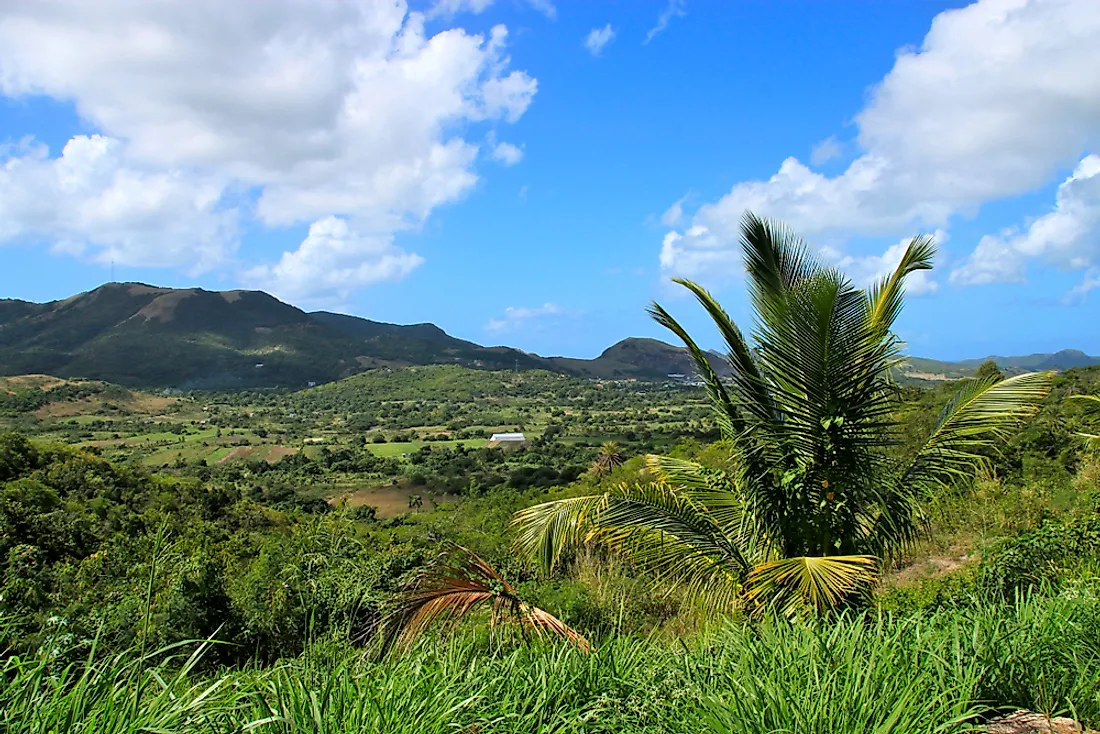What Are The Biggest Industries In Antigua And Barbuda?

Antigua and Barbuda is a West Indies country located between the Atlantic Ocean and the Caribbean Sea. The country is made up of two main islands, Antigua and Barbuda, and several other smaller islands including York Islands, Maiden, Guiana, Green, and Great Bird. The two major islands lie close to each other and both are in the middle of the Leeward Islands. The name “Antigua” is a Spanish word for “Ancient” and “Barbuda” is also a Spanish word for “bearded.” The island country has a population of approximately 82,000 residents. Antigua and Barbuda is a member of the Commonwealth with Queen Elizabeth II as the head of the state.
Overview Of The Economy Of Antigua and Barbuda
The economy of Antigua and Barbuda is service-based, with tourism and government services as the major sources of income and employment. Tourism is the major source of government revenue and accounts for over half of the GDP. The economy of Antigua and Barbuda has been slowed by a series of hurricanes and financial sanctions imposed by the UK and the US as a result of loose money-laundering controls. Agricultural activities on the island nation are mainly directed towards domestic consumption while the manufacturing industry is primarily focused on exports. Although most industries in Antigua and Barbuda are relatively smaller compared to most countries in the Americas, the industries play major roles in the economic development of the country. Here are some of the biggest industries in the dual island nations.
Tourism
Antigua and Barbuda have very limited natural resources and the few minerals available are not fully exploited. Therefore, the country depends mainly on the visitors’ arrival for revenue. Tourism is the mainstay of the economy of Antigua and Barbuda and is the largest and leading sector in terms of generating government revenue and creating employment for the residents. In 1999, the industry accounted for 60% of the GDP and over 50% of all the jobs. Antigua and Barbuda’s tourism industry was one of the earliest to be developed in the Eastern Caribbean and is currently one of the strongest and most established. In 2011, the country’s tourism sector was the second in the world in terms of its relative contribution to the economy with 74.9% of the GDP, over 5 times of the world’s average of 14%. Tourists make an invaluable contribution to the economy, generating US$441.3 million in 2011 and constituted 78.6% of the total export. Antigua and Barbuda receive most tourists from the US (34% of the arrivals in 2010) followed by the UK and the rest of the Caribbean.The tourism sector is marketed and regulated by the Ministry of Tourism. The major challenge facing the tourism sector in Antigua and Barbuda is the competition from other Caribbean destinations. To combat this challenge, the government and the Hotel and Tourist Association have jointly established a fun to market the country as a tourist destination.
Agriculture
Agriculture is an important source of domestic income and employment for a significant number of people in Antigua and Barbuda. However, it contributes to a small proportion of the country’s GDP. Over the past three decades, the contribution of agriculture to the GDP has significantly fallen from 40-12%. The fall has been as a result of the decline in the sugar industry. Agricultural land constitutes about 30% of the total land area but only 18% of the agriculturally potential land is currently in use. The industry employs about 4% of the total workforce. The focus of the industry is mainly in subsistence farming and small-scale commercial farming, mainly catering to the domestic market. As a result, the sector relies on importation to meet the growing demand for agricultural products. The main agricultural export from Antigua and Barbuda include cotton, fruits, and vegetables. A modest amount of sugar is also harvested every year. Common vegetables include carrots, cucumber, carrots, squash, plantains, yams, and tomatoes. Cotton is mainly exported to Japan while fruits and vegetables are exported to the UK and Canada. There is also a substantial number of cattle, poultry, sheep, and goats. Cow’s milk is the most lucrative after fruits and generated approximately US$ 1.8 million in 2010. The major problem facing the agriculture sector in Antigua and Barbuda include drought, pests and diseases, and depletion of agricultural land.
Fishing
In Antigua and Barbuda, the fisheries and forestry sectors often considered as a subsector of the agricultural sector. Fisheries contribute about 50% of the GDP from all the agricultural sectors. This industry mainly caters for domestic consumptions, although export of the lobster catch is growing. The population of Antigua and Barbuda consume more fish per capita (101.4 pounds) per year more than any other country or territory in the Caribbean. The fishing industry employs about 1,200 people. The country has a fairly extensive fishing ground with a coastline of about 260 kilometers and a shelf area of 3,568 square kilometers. Because of the small-scale nature of the fishing industry, Antigua and Barbuda is a net exporter of fish products. The government has rolled out programs that encourage modern fishing methods and also support mechanization and building of new boats.
Financial Service
Antigua and Barbuda has the second-largest banking sector in the Eastern Caribbean region, accounting for about 20% of the region’s deposits, loans, and assets. The financial service industry is dominated by both domestic and international banks, insurance companies, and other financial organizations. There are 8 commercial banks operating in the country. Antigua and Barbuda was ranked 98th out of 183 in the world in 2011 in the World Bank Ease of Doing Business Index. Antigua and Barbuda was accused of having weak anti-money laundering laws by the UK and the US prompting sanctions from the two countries. However, the country has tightened its laws to the satisfaction most foreign countries and was the first to sign the UN anti-money laundering act.











